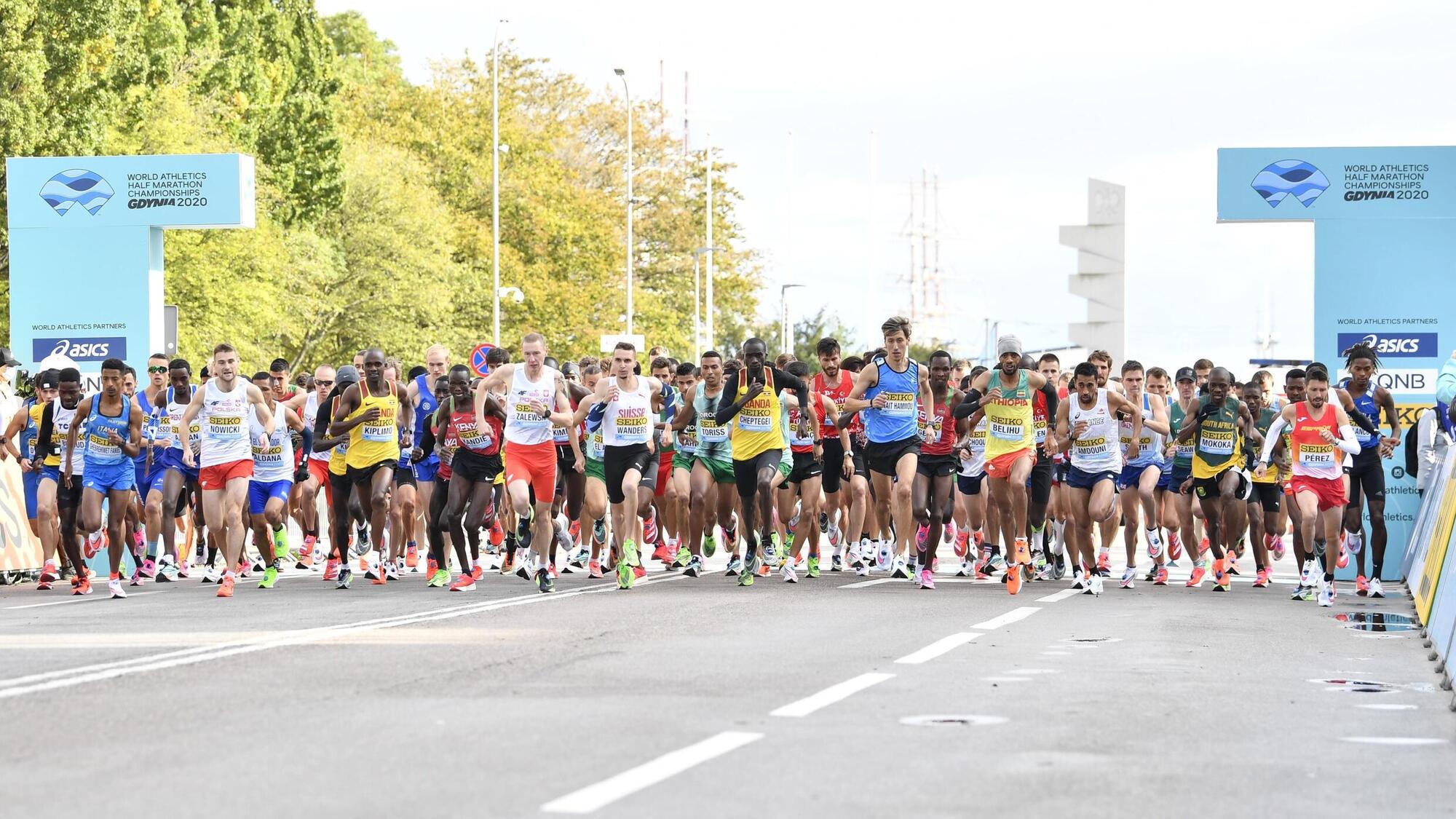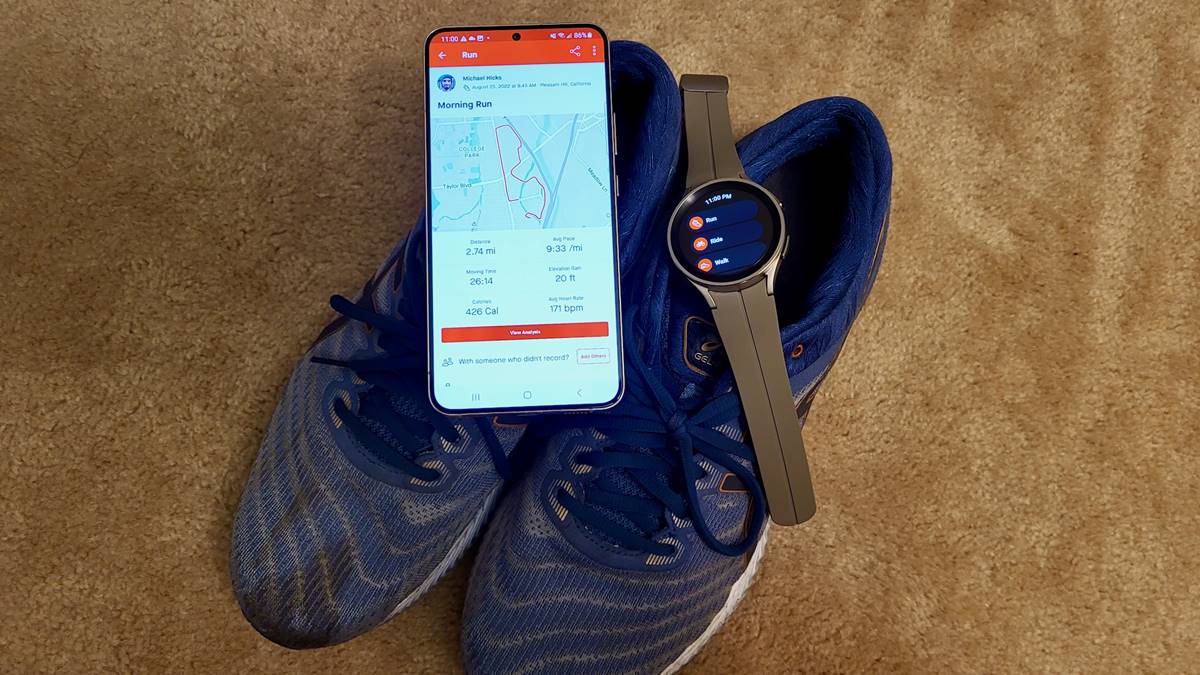

Featured
What Is A PR Workout
Published: August 12, 2023
Discover the benefits of a featured PR workout and how it can enhance your fitness routine. Find out what a PR workout is and why it's the perfect addition to your exercise regimen.
Introduction
Welcome to the world of PR workouts, where strategic communication meets fitness. In today’s fast-paced and highly interconnected society, public relations (PR) has become an essential aspect of any business or organization. Just like physical workouts, PR workouts are designed to improve strength, endurance, and overall performance in the realm of public image and reputation management.
But what exactly is PR? PR, or public relations, is the practice of managing and maintaining a positive and favorable relationship between an organization and its various stakeholders, including customers, employees, investors, and the general public. It involves the strategic distribution of information, the cultivation of positive public perception, and the handling of crisis situations.
While PR can be seen as a behind-the-scenes endeavor, its impact can be felt far and wide. A successful PR campaign can elevate a brand’s reputation, increase customer trust and loyalty, and ultimately drive business growth. However, just like maintaining physical fitness, PR requires regular work and focused effort.
That’s where PR workouts come in. PR workouts are a systematic and strategic approach to improving your organization’s communication and reputation skills. They consist of a variety of exercises, each targeting different aspects of PR, from media relations to crisis management and reputation building. By incorporating these exercises into your PR routine, you can strengthen your PR muscles, enhance your organization’s image, and better navigate the complexities of the modern media landscape.
In this article, we will explore the benefits of PR workouts and delve into the various components of a PR workout. We will look at warm-up exercises to prepare you for PR success, targeted exercises for effective media relations, strengthening exercises for crisis management, endurance exercises for reputation building, and cool-down exercises to ensure a smooth PR operation. So, whether you’re new to PR or a seasoned professional, get ready to sweat it out and transform your communication strategies with PR workouts.
What is PR?
Public relations, often referred to as PR, is the strategic practice of managing communication between an organization and its various stakeholders. Its primary goal is to establish and maintain a positive and favorable public image for the organization. PR professionals are responsible for crafting and disseminating key messages, building relationships with media outlets, and handling crisis situations effectively.
At its core, PR is about managing perceptions. It involves shaping how an organization is perceived by the public, customers, employees, investors, and other key audiences. The aim is to build trust, credibility, and goodwill, which in turn can lead to increased brand loyalty, improved reputation, and long-term success for the organization.
PR encompasses a wide range of activities and tactics. These may include media relations, where PR professionals work to secure coverage and foster positive relationships with journalists and media outlets. This can involve crafting press releases, organizing press conferences, and responding to media inquiries. Community engagement is another important aspect of PR, as it involves connecting and building relationships with local communities and organizations to showcase the organization’s commitment to social responsibility and community welfare.
Furthermore, PR often involves strategic storytelling. By identifying and capitalizing on compelling narratives, PR professionals can shape public opinion and generate positive media coverage. This can be done through thought leadership articles, case studies, testimonials, and other forms of content that highlight the organization’s expertise and values.
In today’s digital age, PR has extended its reach to include online reputation management. This involves monitoring and managing the organization’s online presence, ensuring that online reviews, social media mentions, and search engine results reflect a positive image. Effective online PR strategies help organizations maintain control of their narrative and protect their reputation in the digital space.
Overall, PR plays a vital role in building and safeguarding a company’s reputation. It helps to establish trust, credibility, and authenticity in a competitive marketplace. By effectively managing communication and perception, PR professionals can position organizations as industry leaders, foster customer loyalty, and drive business growth.
Benefits of PR Workouts
Engaging in PR workouts offers a plethora of benefits for organizations looking to enhance their communication and reputation management efforts. Let’s take a closer look at why incorporating PR workouts into your routine can be a game-changer:
- Improved Brand Perception: PR workouts help shape how your organization is perceived by the public. By strategically managing and distributing key messages, crafting compelling narratives, and building relationships with media outlets and influencers, you can bolster your brand’s reputation and create a positive perception of your organization in the minds of your target audience.
- Enhanced Media Relations: Developing strong relationships with journalists and media professionals is crucial for effective PR. PR workouts provide targeted exercises that hone your skills in media relations, enabling you to pitch stories, secure media coverage, and become a trusted source of information in your industry. This can lead to increased media exposure and opportunities to amplify your brand’s message.
- Better Crisis Management: PR workouts include strengthening exercises for crisis management, preparing you to handle unexpected challenges with grace and agility. By practicing crisis communication strategies, anticipating potential crises, and developing robust crisis management plans, you can proactively manage and mitigate the impact of negative situations on your organization’s reputation.
- Strengthened Online Presence: In today’s digital world, having a strong online presence is crucial. PR workouts incorporate exercises for online reputation management, helping you monitor and shape your brand’s image across various online platforms. By actively managing your online presence, you can respond promptly to customer feedback, engage in meaningful conversations, and maintain a positive perception of your organization in the digital sphere.
- Increased Customer Trust and Loyalty: PR workouts focus on building trust and fostering positive relationships with your target audience. By consistently delivering authentic and value-driven messaging, engaging in honest and transparent communication, and showcasing your organization’s commitment to customer satisfaction, you can cultivate a loyal customer base and gain a competitive edge in the market.
By incorporating PR workouts into your organization’s routine, you can reap the benefits of a well-executed PR strategy. From improved brand perception and enhanced media relations to effective crisis management and a strengthened online presence, PR workouts provide the tools and techniques necessary to navigate the complex world of communication and reputation management.
Components of a PR Workout
A PR workout consists of various components, each focusing on different aspects of public relations. By incorporating these components into your PR routine, you can develop a well-rounded and effective communication strategy. Here are the key components of a PR workout:
- Warm-up Exercises: Just like in physical workouts, warming up is crucial in PR. Warm-up exercises in PR involve conducting research to understand your target audience, setting clear communication goals, and establishing a solid foundation for your PR strategy. This includes analyzing market trends, competitor analysis, and defining key messages that align with your organization’s values and objectives.
- Targeted Exercises for Media Relations: Media relations play a vital role in PR. These exercises focus on building relationships with journalists and media professionals. This includes creating media lists, crafting effective press releases and media pitches, organizing press conferences and media events, and engaging in proactive media outreach. By mastering these exercises, you can increase media exposure and secure positive media coverage for your organization.
- Strengthening Exercises for Crisis Management: Crisis situations can arise unexpectedly, and it’s essential to be prepared. Strengthening exercises for crisis management involve developing crisis communication plans, conducting scenario-based training, and establishing protocols for handling crises effectively. These exercises ensure that your organization can respond swiftly, confidently, and transparently in times of crisis, protecting your reputation and maintaining trust with your stakeholders.
- Endurance Exercises for Reputation Management: Building and maintaining a positive reputation is an ongoing effort. Endurance exercises for reputation management involve consistently monitoring and managing your organization’s online and offline reputation. This includes actively listening to customer feedback, responding to reviews, implementing reputation management strategies, and leveraging positive brand ambassadors and testimonials to enhance your reputation and credibility.
- Cool-down Exercises: Just like in physical workouts, cooling down is crucial in PR to conclude on a positive note. Cool-down exercises involve evaluating the success of your PR campaigns, analyzing key performance indicators (KPIs), and conducting post-campaign assessments. This allows you to identify areas of improvement, refine your PR strategies, and apply learnings to future communication efforts.
By incorporating these components into your PR workout, you can develop a comprehensive PR strategy that covers all crucial aspects of effective communication and reputation management. Each component contributes to building a strong brand image, fostering positive relationships with the media and stakeholders, handling crises efficiently, managing and enhancing your reputation, and continuously improving your PR efforts.
Warm-up Exercises
Just like in physical workouts, warm-up exercises are essential in the world of PR. They help lay the foundation for a successful PR campaign by ensuring that you have a clear understanding of your target audience, communication goals, and the key messages you want to convey. Here are some key warm-up exercises to get you started:
- Research Your Target Audience: Before embarking on any PR campaign, it’s crucial to have a deep understanding of your target audience. Conduct market research to identify their demographics, interests, motivations, and pain points. This information will guide your communication strategy and help you tailor your messaging to resonate with your audience.
- Set Clear Communication Goals: Define specific, measurable, achievable, relevant, and time-bound (SMART) goals for your PR efforts. Whether it’s increasing brand awareness, improving customer perception, driving website traffic, or generating media coverage, having well-defined goals will keep your PR strategy on track.
- Establish Key Messages: Craft clear and compelling key messages that align with your organization’s values and objectives. These messages should be carefully designed to resonate with your target audience and effectively communicate your unique selling points.
- Analyze Market Trends: Stay up to date with industry trends, competitor activities, and market dynamics. Understanding the landscape in which your organization operates will help you identify opportunities and position your brand effectively.
- Define Your Unique Story: Identify the unique aspects of your organization that set you apart from competitors. This could be your history, mission, values, or innovative products/services. Develop a compelling narrative that captures the essence of your brand and resonates with your target audience.
By engaging in these warm-up exercises, you establish a solid foundation for your PR strategy. Researching your target audience, setting clear goals, crafting key messages, analyzing market trends, and defining your unique story will equip you with the knowledge and insights necessary to create a compelling and targeted communication plan. Remember, a strong warm-up sets the stage for a successful PR workout!
Targeted Exercises for Media Relations
Media relations are a crucial aspect of any PR strategy. These targeted exercises focus on building strong relationships with journalists, securing media coverage, and becoming a trusted source of information in your industry. Here are some key exercises to enhance your media relations:
- Create Targeted Media Lists: Develop comprehensive media lists that include journalists, reporters, influencers, and bloggers who cover topics relevant to your industry. Research and identify the individuals or outlets that are most likely to be interested in your organization’s news or expertise.
- Craft Compelling Press Releases and Media Pitches: Master the art of writing engaging and newsworthy press releases and media pitches. These documents should succinctly convey the most important information while capturing the attention of journalists and compelling them to cover your story.
- Build Relationships with Journalists: Invest time in cultivating relationships with journalists and reporters who cover your industry. Engage them through personalized emails, phone calls, or in-person meetings. Be a valuable resource by providing relevant information, expert insights, and exclusive opportunities for coverage.
- Organize Press Conferences and Media Events: Host press conferences or media events to create opportunities for journalists to interact with key stakeholders in your organization. These events can help generate significant media coverage and provide a platform to share important announcements or showcase new products/services.
- Respond Promptly to Media Inquiries: When journalists reach out with interview requests or seek information, it’s vital to respond promptly and professionally. Being accessible and cooperative with the media will foster trust and increase your chances of positive coverage.
- Monitor Media Coverage: Stay on top of media coverage related to your organization. Monitor news outlets, social media, and industry-specific platforms to track mentions, reviews, and articles. This will help you evaluate the effectiveness of your media relations efforts and identify opportunities for engagement or response.
By incorporating targeted exercises for media relations into your PR workout, you can enhance your organization’s visibility, establish credibility with the media, and leverage media coverage to reach a wider audience. Building and nurturing relationships with journalists, crafting compelling pitches, and being responsive to media inquiries are pivotal in securing positive coverage and increasing your organization’s presence in the media landscape.
Strengthening Exercises for Crisis Management
Effective crisis management is crucial for protecting your organization’s reputation during challenging times. These strengthening exercises focus on preparing you and your team to handle crises with confidence and resilience. Incorporating these exercises into your PR workout will enhance your crisis management capabilities:
- Develop Crisis Communication Plans: Create comprehensive crisis communication plans that outline protocols, responsibilities, and communication channels during a crisis. Identify potential crisis scenarios and prepare pre-drafted messaging to ensure timely and efficient communication.
- Conduct Mock Crisis Drills: Simulate crises through mock drills to test your organization’s preparedness and response capabilities. This hands-on exercise allows your team to practice crisis communication strategies, evaluate weaknesses, and refine your crisis management plans.
- Establish a Crisis Response Team: Form a dedicated crisis response team comprising key stakeholders from various departments. Assign roles and responsibilities to ensure swift decision-making and effective communication during a crisis.
- Provide Training to Spokespersons: Conduct media training sessions for designated spokespersons in your organization. These sessions should cover techniques for managing press conferences, delivering clear and concise messages, and handling challenging media interviews with confidence and composure.
- Monitor and Anticipate Crisis Signals: Actively monitor potential crisis signals, such as negative social media mentions, customer complaints, or industry trends. By identifying early warning signs, you can take proactive measures to mitigate the impact of a crisis and potentially avoid it altogether.
- Establish Relationships with Key Stakeholders: Strengthen relationships with key stakeholders even before a crisis occurs. This includes maintaining open lines of communication with employees, customers, suppliers, and relevant industry associations. Building trust and rapport with these stakeholders can help mitigate reputational damage during a crisis.
By regularly engaging in these strengthening exercises for crisis management, your organization will be better equipped to handle unexpected challenges with composure and efficiency. Preparation, practice, and proactive measures enable you to respond swiftly, manage the flow of information effectively, and protect your organization’s reputation during times of crisis.
Endurance Exercises for Reputation Management
Reputation management is an ongoing endeavor that requires endurance and consistent effort. These endurance exercises focus on maintaining and enhancing your organization’s reputation in the long run. By incorporating these exercises into your PR workout, you can effectively manage your organization’s reputation:
- Active Listening and Engagement: Actively monitor and listen to what your customers and stakeholders are saying about your organization. Engage with them through social media platforms, respond to feedback, and address their concerns promptly. This active engagement demonstrates your commitment to customer satisfaction and builds trust.
- Implement Online Reputation Management Strategies: Develop strategies to manage and maintain your organization’s online reputation. Regularly audit your online presence, monitor online reviews and mentions, and respond appropriately to both positive and negative feedback. Proactively managing your online reputation ensures that your brand is perceived positively in the digital arena.
- Showcase Thought Leadership: Position yourself and your organization as industry thought leaders by creating and sharing valuable content. Write articles, contribute to relevant publications, participate in industry conferences as speakers, and share your expertise with others. Establishing thought leadership enhances your reputation and credibility in your field.
- Focus on Corporate Social Responsibility: Demonstrate your organization’s commitment to social and environmental responsibilities through meaningful corporate social responsibility (CSR) initiatives. Engage in philanthropic activities, support causes aligned with your values, and communicate your CSR efforts transparently. This fosters a positive reputation and strengthens relationships with stakeholders who prioritize social responsibility.
- Build Brand Ambassadors and Advocates: Cultivate a network of brand ambassadors and advocates who support your organization. These could be satisfied customers, employees, or industry influencers who can help spread positive word-of-mouth and reinforce your reputation. Nurture these relationships and empower them to share their positive experiences with others.
- Continuously Evaluate and Adapt: Regularly assess the impact of your reputation management efforts through surveys, feedback loops, and performance metrics. Analyze the data and adjust your strategies as needed to align with the evolving needs and preferences of your target audience.
By engaging in these endurance exercises for reputation management, you can strengthen your organization’s reputation and build long-term trust with your stakeholders. Active listening and engagement, implementing online reputation management strategies, showcasing thought leadership, focusing on corporate social responsibility, cultivating brand ambassadors, and continuously evaluating your efforts will pave the way for a positive and enduring reputation in the marketplace.
Cool-down Exercises
Just like in physical workouts, cool-down exercises are essential in a PR routine to wrap up your efforts on a positive note. These exercises are designed to evaluate the success of your PR campaigns, reflect on lessons learned, and prepare for future communication endeavors. Here are some cool-down exercises to incorporate into your PR workout:
- Evaluate Key Performance Indicators (KPIs): Assess the effectiveness of your PR campaigns by measuring key performance indicators that align with your communication goals. Track metrics such as media mentions, website traffic, social media engagement, customer sentiment, and other relevant data points to gauge the impact of your efforts.
- Conduct Post-Campaign Assessments: Reflect on the outcomes and results of your PR campaigns. Identify what worked well and what could be improved. Analyze the strategies, tactics, and messaging that resonated with your target audience and contributed to your objectives. Use these insights to refine your future PR efforts.
- Request Feedback: Seek feedback from key stakeholders, clients, and team members involved in your PR campaigns. Their perspectives can provide valuable insights and help identify areas of improvement. Encourage open and honest feedback to foster a culture of continuous learning and growth.
- Stay Informed on Industry Trends: Keep yourself updated on the latest industry trends and developments. Stay informed about changes in the media landscape, emerging communication platforms, and evolving best practices in PR. This knowledge will help you adapt your strategies and stay ahead of the curve in the ever-changing PR landscape.
- Document and Archive PR Campaigns: Document your PR campaigns, including strategies, tactics, and results. Maintain a repository of successful case studies, press releases, media coverage, and other materials. This serves as a valuable resource for future reference and allows you to learn from past experiences.
- Celebrate Successes: Recognize and celebrate the achievements and successes of your PR campaigns. Acknowledge the individuals and teams who contributed to the outcomes. Celebrating milestones instills a sense of motivation and pride, fostering a positive mindset for future PR endeavors.
By incorporating cool-down exercises into your PR routine, you conclude your efforts in a constructive manner. Evaluating KPIs, conducting post-campaign assessments, seeking feedback, staying informed, documenting campaigns, and celebrating successes enable you to continuously improve and refine your PR strategies. The cool-down phase is crucial for learning from past experiences and setting the stage for future success in your PR journey.
Conclusion
Congratulations! You’ve now completed your PR workout and equipped yourself with a range of exercises to improve your organization’s communication and reputation management efforts. By incorporating warm-up exercises, targeted exercises for media relations, strengthening exercises for crisis management, endurance exercises for reputation management, and cool-down exercises into your PR routine, you can elevate your organization’s PR game.
Through your PR workout, you’ve learned the importance of understanding your target audience, setting clear communication goals, and crafting compelling key messages. You’ve also discovered the value of building strong relationships with journalists, securing media coverage, and becoming a trusted source of information in your industry.
Furthermore, you now know how to strengthen your crisis management skills, preparing for unexpected challenges with confidence and resilience. With endurance exercises for reputation management, you are equipped to actively listen, engage with your stakeholders, and demonstrate your organization’s commitment to social responsibility.
Lastly, the cool-down exercises have taught you the importance of evaluating key performance indicators, reflecting on campaign outcomes, and staying informed about industry trends. By consistently incorporating these exercises into your PR routine, you are well on your way to becoming a PR expert.
Remember, PR is an ongoing process requiring consistent effort and adaptation. The knowledge and skills acquired through your PR workout will help you cultivate a positive public image, build strong relationships with stakeholders, effectively manage crises, and continuously enhance your organization’s reputation.
So, lace up your PR shoes, keep practicing these exercises, and stay committed to refining your PR strategies. With each PR workout, you’ll strengthen your communication skills, amplify your message, and ultimately drive the success of your organization in the ever-evolving world of public relations.








